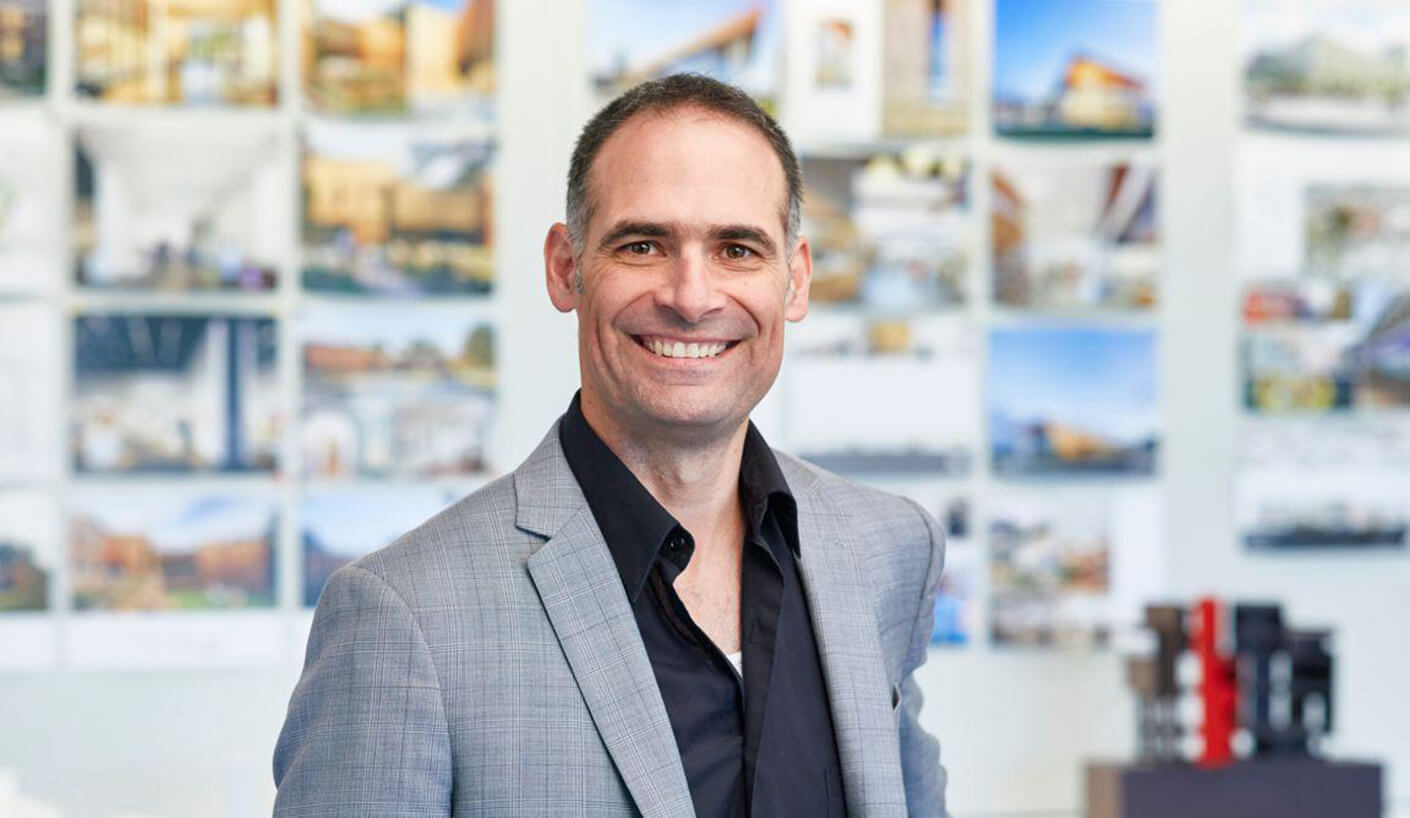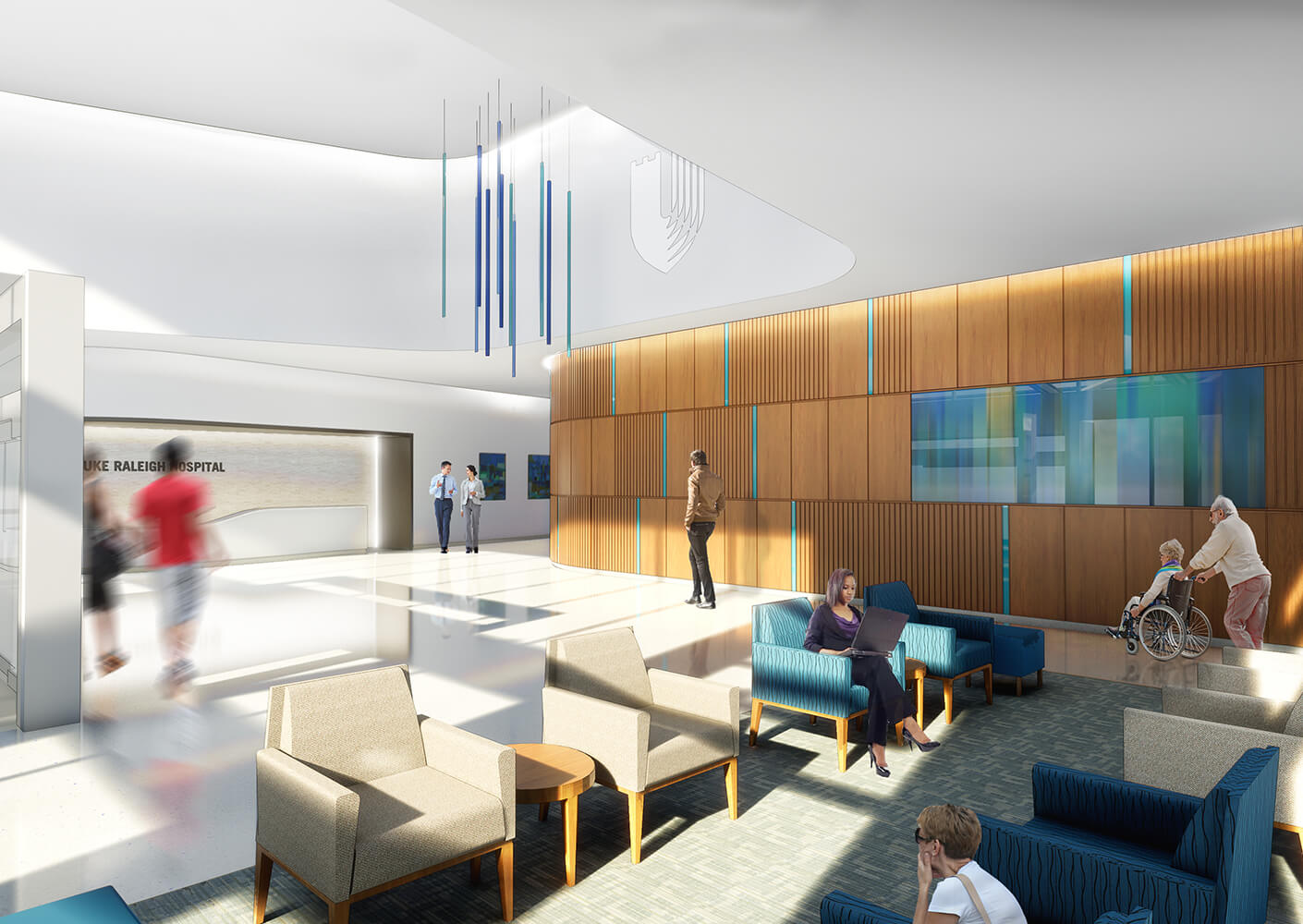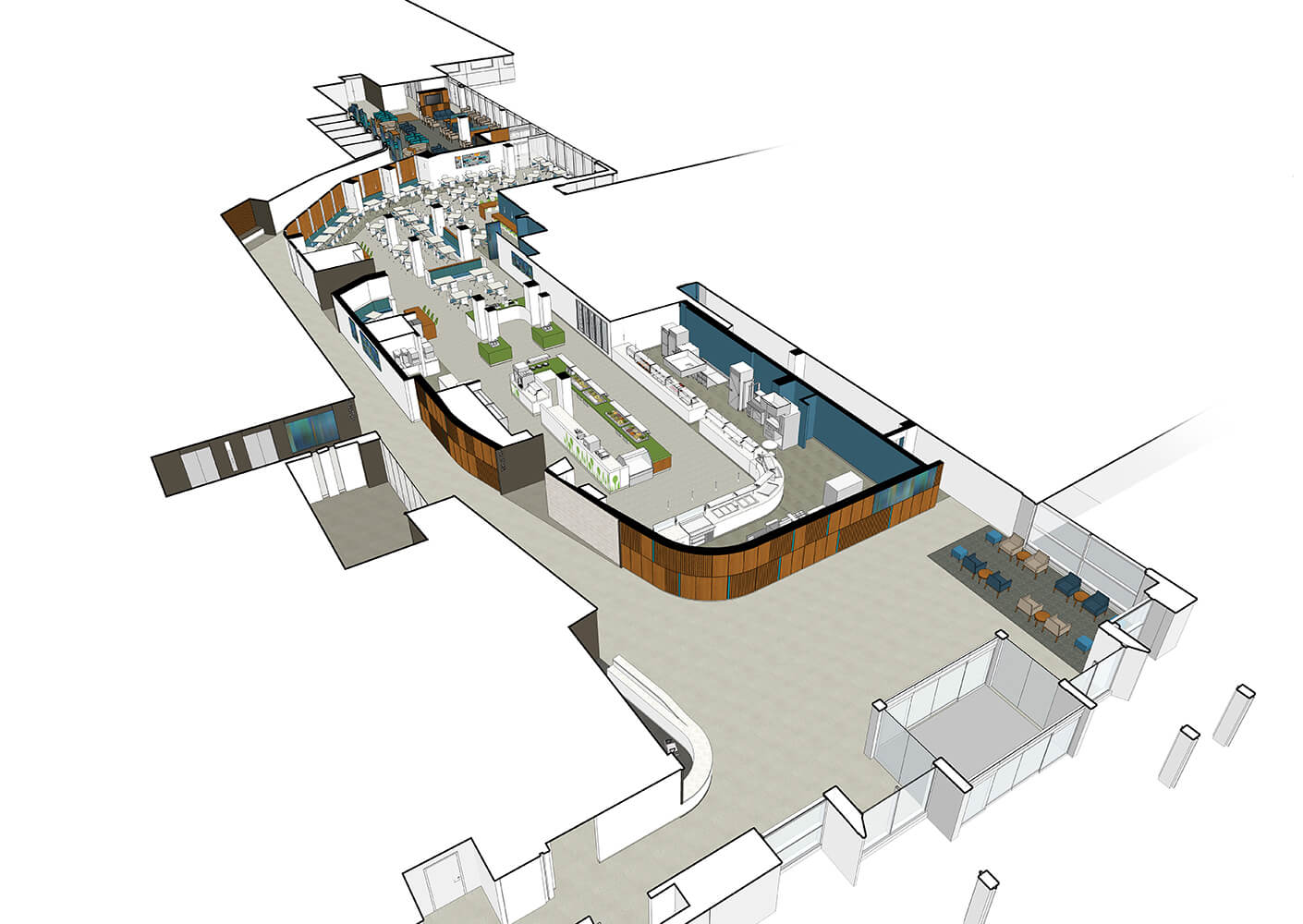Conversations with Colleagues: Rodrigo Reyes


Q: What drew you to the design profession, and what is keeping you here?
A: I was born into a big, close-knit family in Managua, Nicaragua. Several of my family members are architects, interior designers, and artists. My grandfather, Julio Cardenal Arguello or “Papino” as we used to call him, was the first native Nicaraguan to get a degree in Architecture and is remembered in Nicaragua as the architect that brought modernism to the country. My mom, an artist, ran her own art school for children where my cousins, friends, and I were free to express ourselves. One time, my mom left us for about one hour, and my older cousins decided to express themselves by using me as a canvas. They painted me head to toe. I was four years old and loved it! Design and creative thinking, order and balance, color coordination, and awareness of space were part of my daily experiences from an early age. When I was eight, I told my mom my dream was to become an architect.
I have been an immigrant since leaving my home country of Nicaragua when I was seven when my family left because of civil war and settled in Costa Rica. At nineteen I immigrated again when following my dreams led me to the University of Miami (UM) in Florida, where my passion for design flourished. Elizabeth Plater-Zyberk, from the firm Duany-Plater-Zyberk (DPZ) known for their leadership in New Urbanism, was the UM’s School of Architecture Dean at the time. As such our training was in urban design and how each building contributes to the overall fabric of a town or city. With the university, including then university professor Jose Gelabert-Navia (now managing principle of the Perkins&Will Miami Studio), I spent a semester in Rome, and was immersed in history and culture, understanding of scale and proportion, and became enamored with the way architecture has shaped societies for centuries.
Soon after graduation I joined the Perkins&Will Miami studio and learned how to apply the concepts I had learned at UM to real life projects. Through my years at Perkins&Will in Miami, Atlanta, and now North Carolina, I have had the opportunity to worked on numerous large scale, complex projects. I have learned the importance of listening to our clients to understand their vision while understanding the history of a specific site and the relationship each project has to the wider community.
UNC Marsico Hall is a great example of how a large building with an incredibly complex program can fit seamlessly in a constrained site, enhance the urban fabric, and elevate the human experience of those working in the building as well as those just going by the site. Our collective goal to use design as a tool to “inspire joy, uplift life and strengthen the spirit of a community” continues to inspire me, to look forward to every day, and in the hustle and bustle of life think broadly about how my actions have the power to change lives
Q: Describe a design project you’re working on right now, whether professional or personal, that you’re especially proud of—and why.
A: I recently worked on a redesign for a client whose vision was grounded by a simple idea: a hospital with a boutique hotel feeling. The walls were set, and our team could not go back to the users to make significant changes to the floor plans. We were limited to shaping spaces that had been previously designed. We developed a simple concept to craft a calming visitor experience through the thoughtful use of materials and proportions and the use of architectural wayfinding elements.
We also used white gyp and wood accent walls on straight runs with simple radius curves, and quiet portals through the walls to identify destinations, creating a striking composition. We have a very happy client and I love the design because of its simplicity, materiality, and beautiful composition. The project is currently being built and the client has retained our services to help them ensure design intent is carried through to completion.



Q: Tell us about a time when you met someone who told you your project had somehow uplifted them, or improved their life—what did that person say, and how did it make you feel?
A: The best part of being an architect and seeing your ideas become tangible, inhabitable spaces is when, years after the building has been completed, someone comes to you and tells you how well the building or space is working for them. We design buildings, not to put our stamp on the world, but to create spaces where people feel comfortable, and find peace, joy, and inspiration in the daily use of spaces.
The design of hospitals and health care facilities is my passion. Creating healing spaces that provide natural light, views to nature, and a sense of harmony can go a long way in helping people cope and recuperate from their ailments. In 2014, I designed the interior for a 75,000 square foot addition to Hospital Vivian Pellas in Nicaragua. The addition included a children’s wing where the concept was the sea. We had a very limited budget (about 1/3 of the budget of a typical hospital in the US), but with gyp, paint, graphics, plastic laminate and intentionally situated windows, we created simple themed spaces, shaping the nurse station as a boat centered in the unit for visual control; corridors ending on windows to the outside; and designing each patient room to look like a cabin in a cruise. Every time I go back to visit the space, I get comments on how the children love it and have a chance to forget why they are there. We approach each project with enthusiasm and do it with love. It brings tears to my eyes to think that something I did and poured so much love into allows others to have positive, enriching experiences.
The love that we put into a project is embodied in the buildings we create and is given back to the people that use it. To me, that is what architecture is all about!
Q: In what positive ways have your experiences at Perkins&Will changed you, personally or professionally, and/or your outlook on the world?
A: My experience with Perkins&Will spans my entire architectural career. It began when my previous professor, Jose Gelabert-Navia, was asked to start the Miami Perkins&Will studio, and, when I graduated, asked me to join. I was employee #4 In 1995. A lot has happened since then. I moved to the Atlanta studio for a few years (1998-2001). Then I went back to Nicaragua (2001-2004). Finally, in 2004 I returned to Perkins&Will to working in the Durham studio for the North Carolina practice. Across all of these years, my experiences at Perkins&Will have continued to open my eyes to realities that are not easy to see but affect our daily life. For example, Perkins&Will has issued a call for all of us to be stewards of our own environment through research and to drive sustainability and accept the challenge to create buildings that produce their own energy, do not generate trash, and enhance the world simply by existing. The impact that design and the construction industry can have on the overall carbon footprint of humanity is immense. This understanding has changed the way I approach design challenges and drives me to think about how I can personally make every day choices to respect the environment.
I have learned the importance of understanding how our projects fit into the broader goals of society and the power architecture has to change lives.